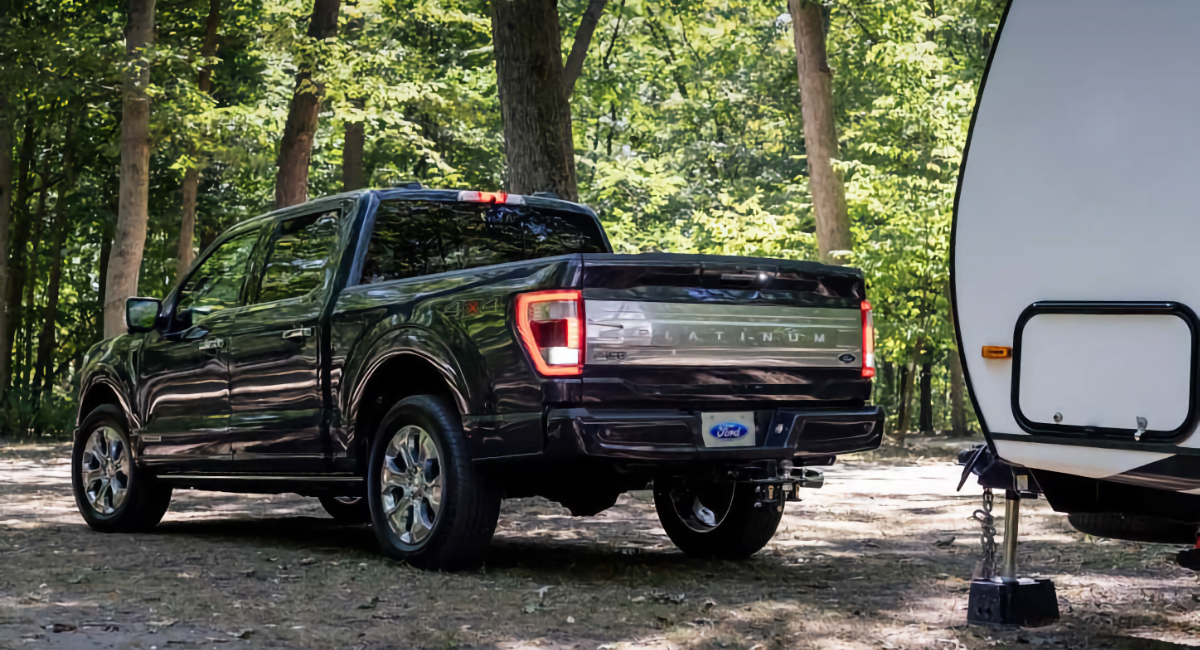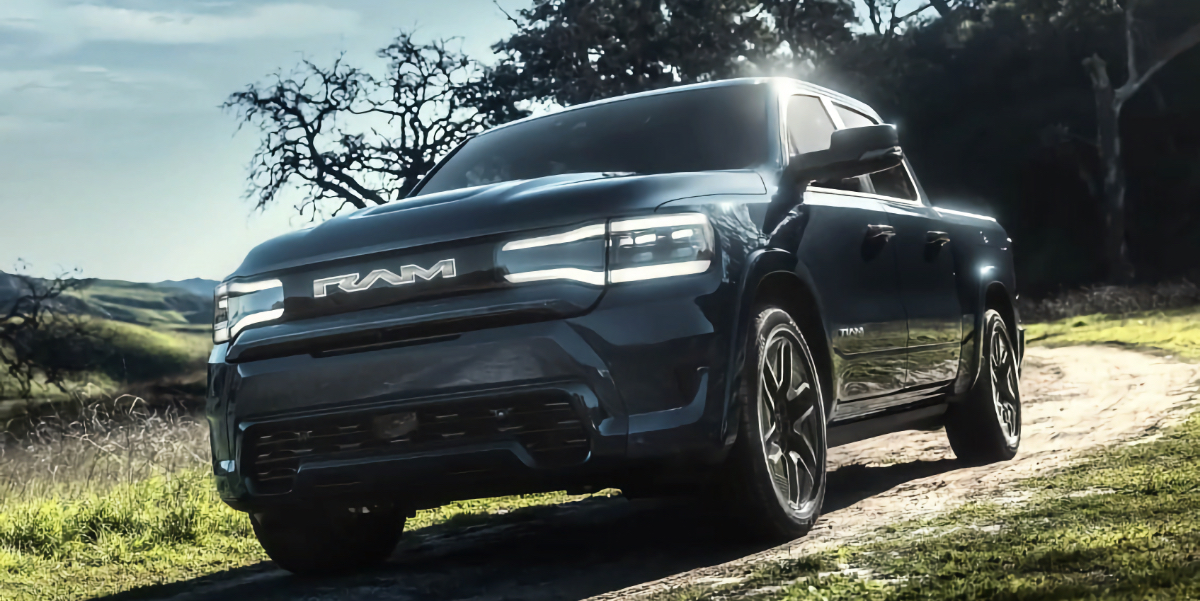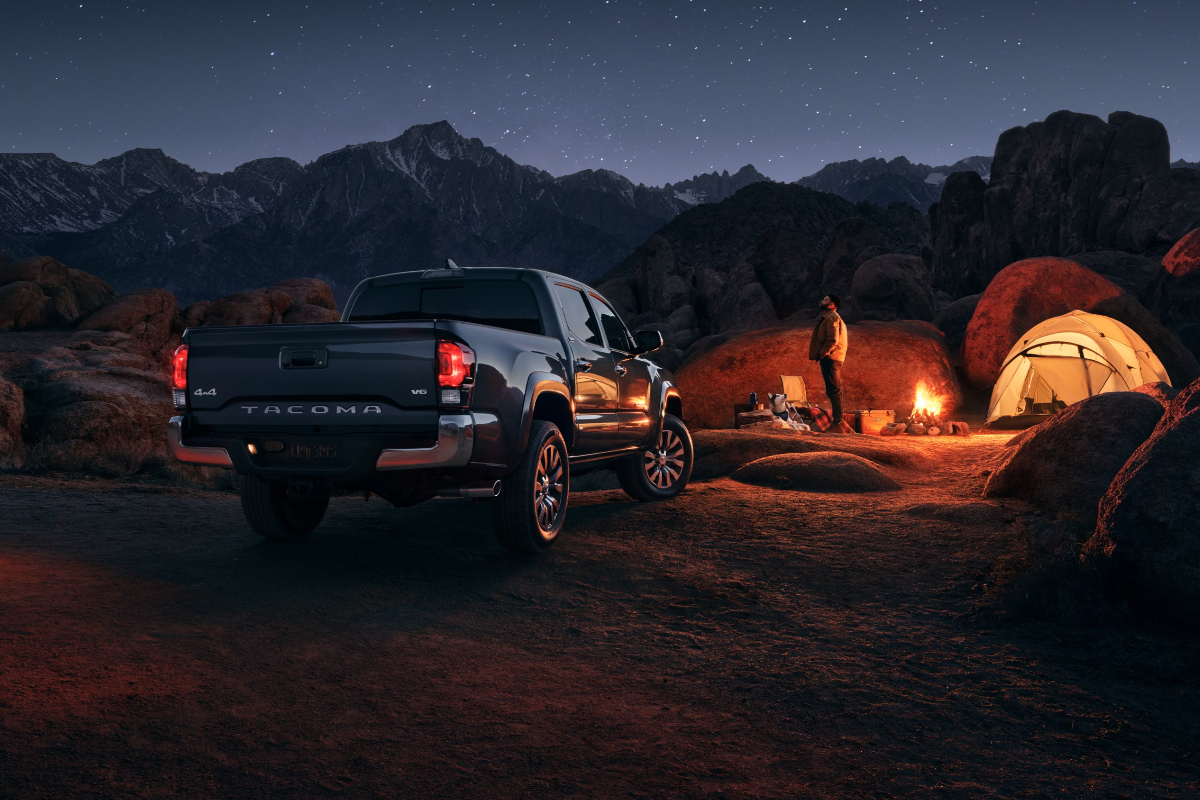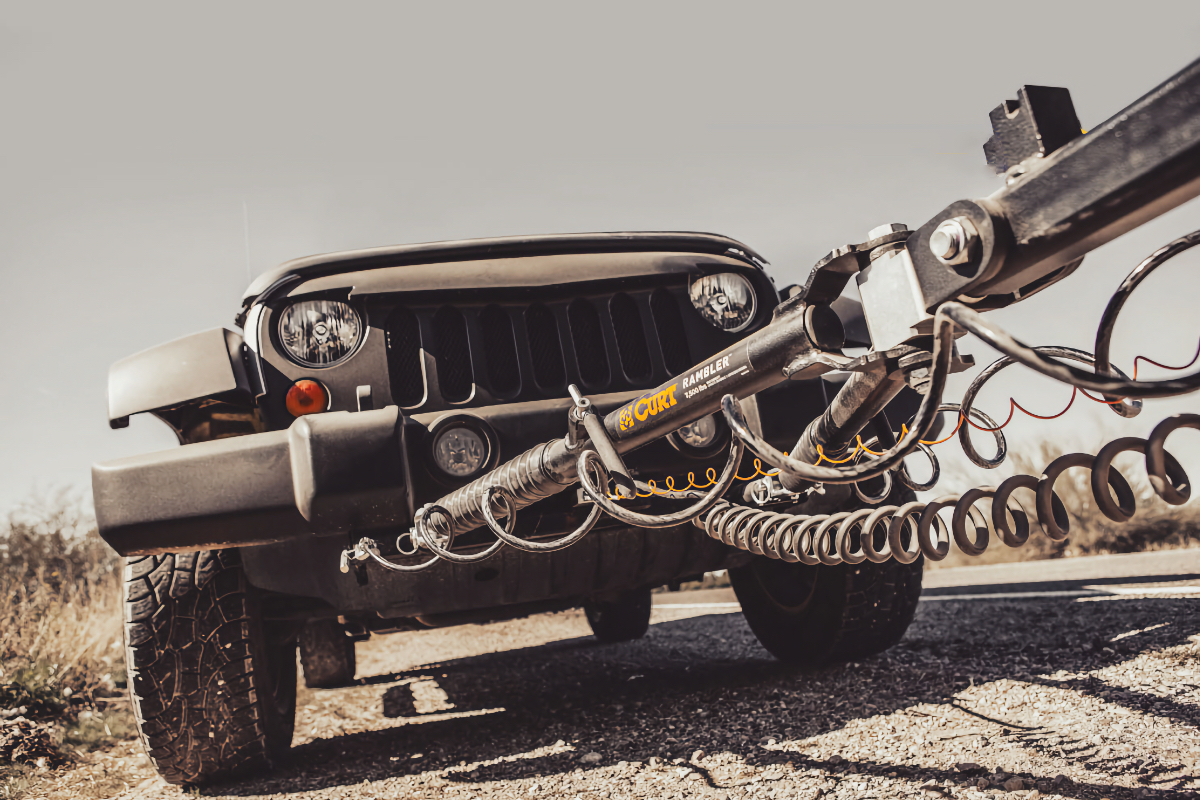What You’ll Need to Tow a Car Behind Your RV
By trailer, tow bar, or tow dolly—here’s how to tow a car behind your RV and some accessories you’ll need for each one.
Image Caption:
Quick excursions to nearby trailheads or parks. Running into town for groceries or equipment. Picking up friends or family from local airports, even. It only takes one RV trip with a car at your campsite to know what a convenience towing a car to your site can be.
Sure, part of the allure of a motorhome is that you don’t have to rely on a truck for a towable RV or a fifth wheel. But, these days, towing a car behind your RV is common and handy. And, with the right accessories, the small amount of extra time required for setup is well worth it once you arrive at the campsite with a car ready for quick trips.
By trailer, tow bar, or tow dolly—these are the three typical ways to tow a car behind your RV. As their names imply: a trailer carries a vehicle with all four wheels on the trailer, a tow bar pulls the entire car behind the RV (also known as flat towing), and a tow dolly supports two car wheels while the other two ride on the pavement freely.
Here’s a look at each method of towing and accessories to consider for each. Relevant for anyone already towing with one of these methods, or for anyone thinking about adding car towing to their RV setup, consider these accessories to make towing safer, easier, and best for your setup.
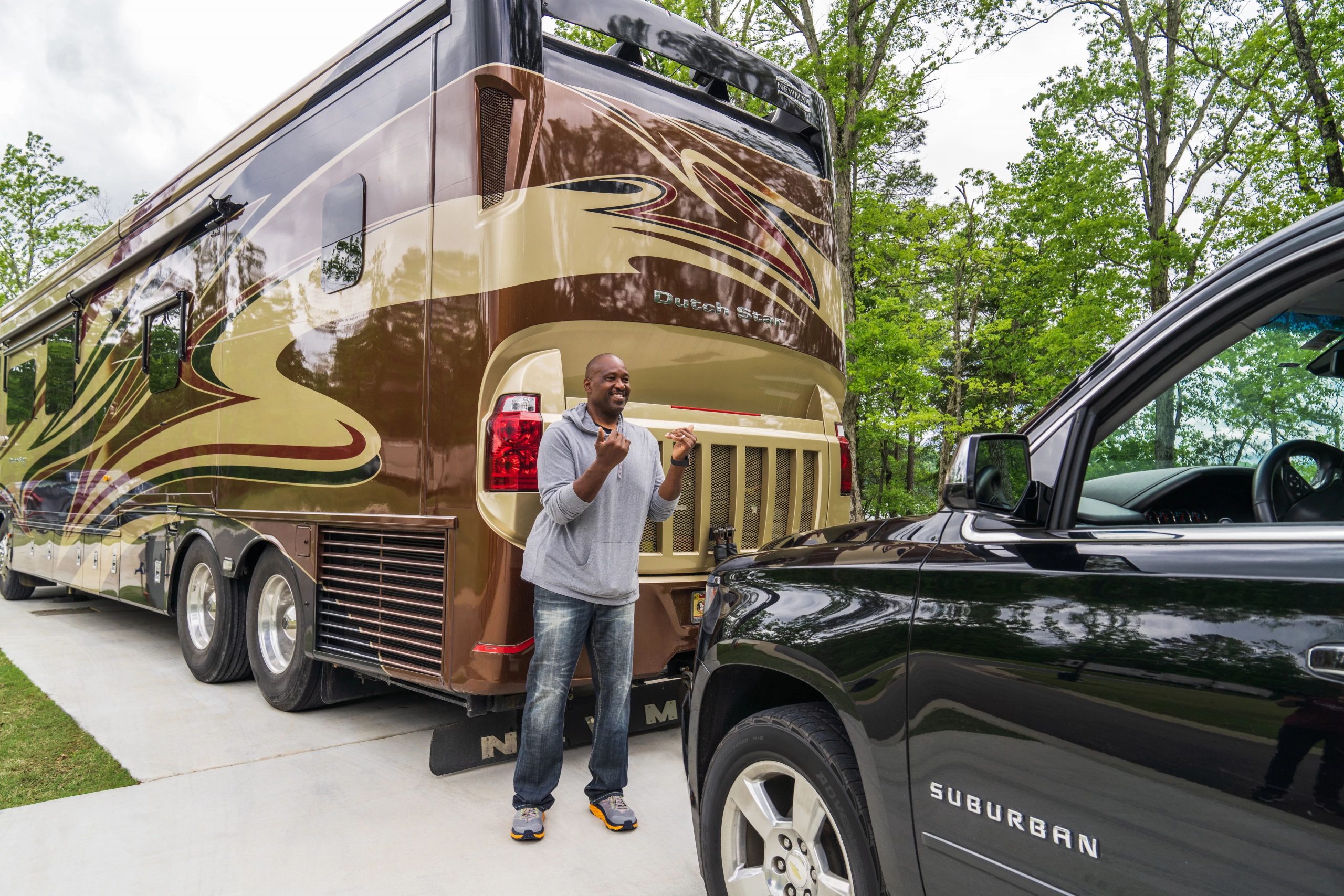
Flat towing with a tow bar.
Trailer Towing Accessories
When you use a trailer to tow your vehicle, you shortcut a lot of problems that arise when two or four wheels of the vehicle being towed are on the pavement. With all four wheels securely off the road, you just have to worry about the trailer and its connections.
Weight Distribution Hitch
When towing a trailer behind your motorhome, several components work together to ensure a safe, connected, and smoother ride. Anyone you’ve met towing a fifth-wheel or a toy hauler is familiar with setting up a hitch and a ball mount. For motorhomes, consider a weight-distribution hitch, which redistributes some of the tongue weight. These often include sway bars that reduce the sway of your trailer.
Electric Trailer Dolly
While trailers are arguably the most reliable towing option for your car, the primary downside is the trailer itself: where do you put it after you’ve removed the car? How do you move it around the campsite? Enter the electric trailer dolly. This allows you to conveniently move the trailer wherever you need it once disconnected from the motorhome, out of the way at your campsite, or into storage while at home.
Flat Towing Accessories
For this method, a tow bar connects your vehicle to your motorhome. While many will swear by a different towing method, there are several distinct benefits of flat towing. For starters, the price point: it’s generally cheaper than a trailer or tow dolly. Plus, it’s a lot quicker and easier to connect, getting you on the road before trailer or tow dolly setups.
Note: you can’t flat tow every vehicle. While 4×4 and AWD vehicles are more likely than most, these still aren’t encompassing requirements. Features like transmission disconnect and steering lockout override help, too. But check before deciding on this method.
Tow Bar Mounting Brackets
Also called baseplates, these connect your tow bar to your vehicle. Direct-connect or crossbar style, these are mounted to your vehicle’s frame for quick mount and dismount. While some are more conspicuous than others, you can also find versions like these mounting brackets that are more discrete.
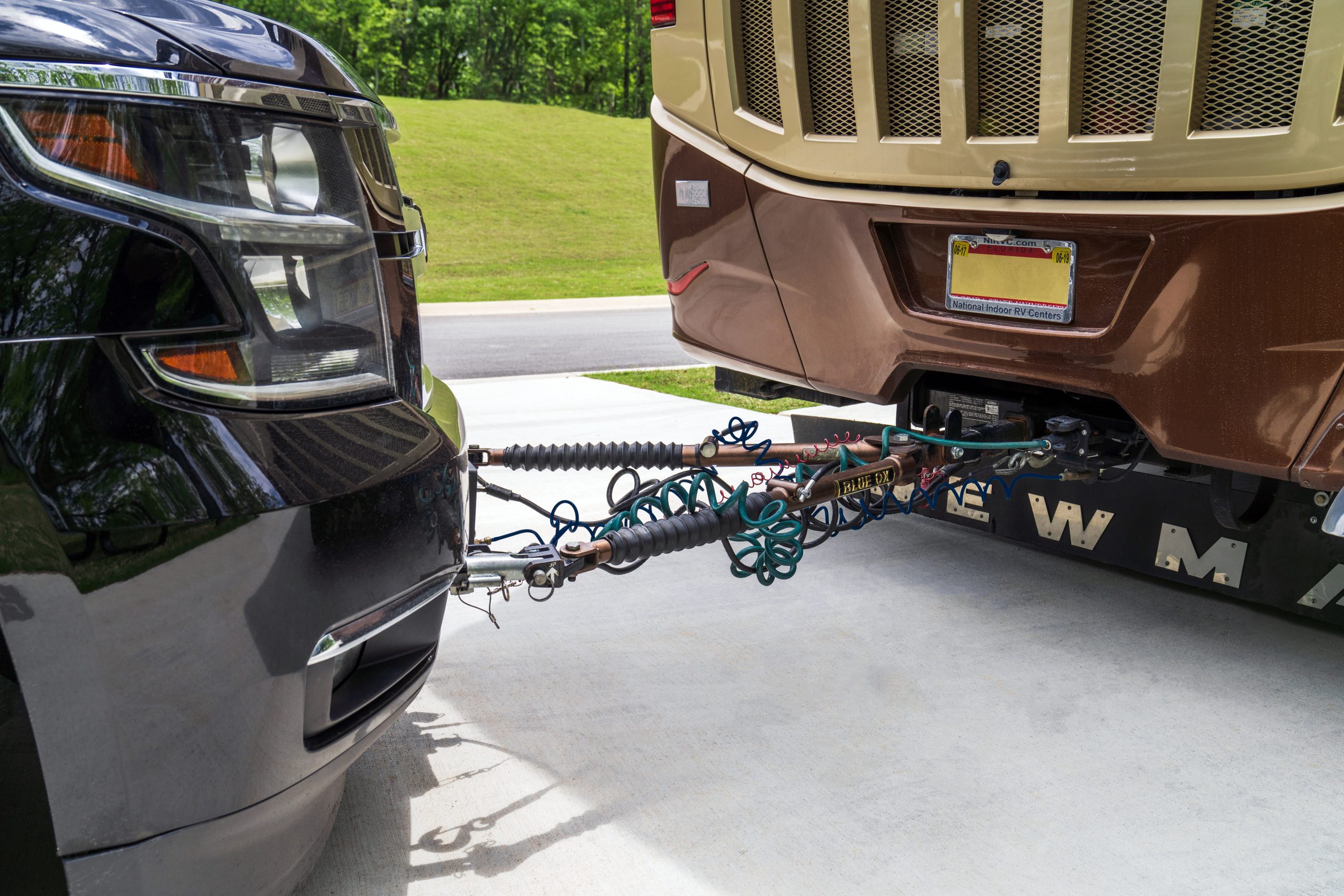
A motorhome equipped with a tow bar to tow an SUV.
Supplemental Braking
These systems connect to your tow vehicle to align its braking system with the RVs. For example, the Roadmaster InvisiBrake tow vehicle braking system is a great accessory for flat towing your vehicle. Its inconspicuous design will fit anywhere and will help maintain a safe tow by matching the braking of the motorhome.
Tow Dolly Accessories
The tow dolly works especially well with front-wheel drive vehicles, getting the front wheels off the ground onto the dolly, and letting the back wheels roll freely.
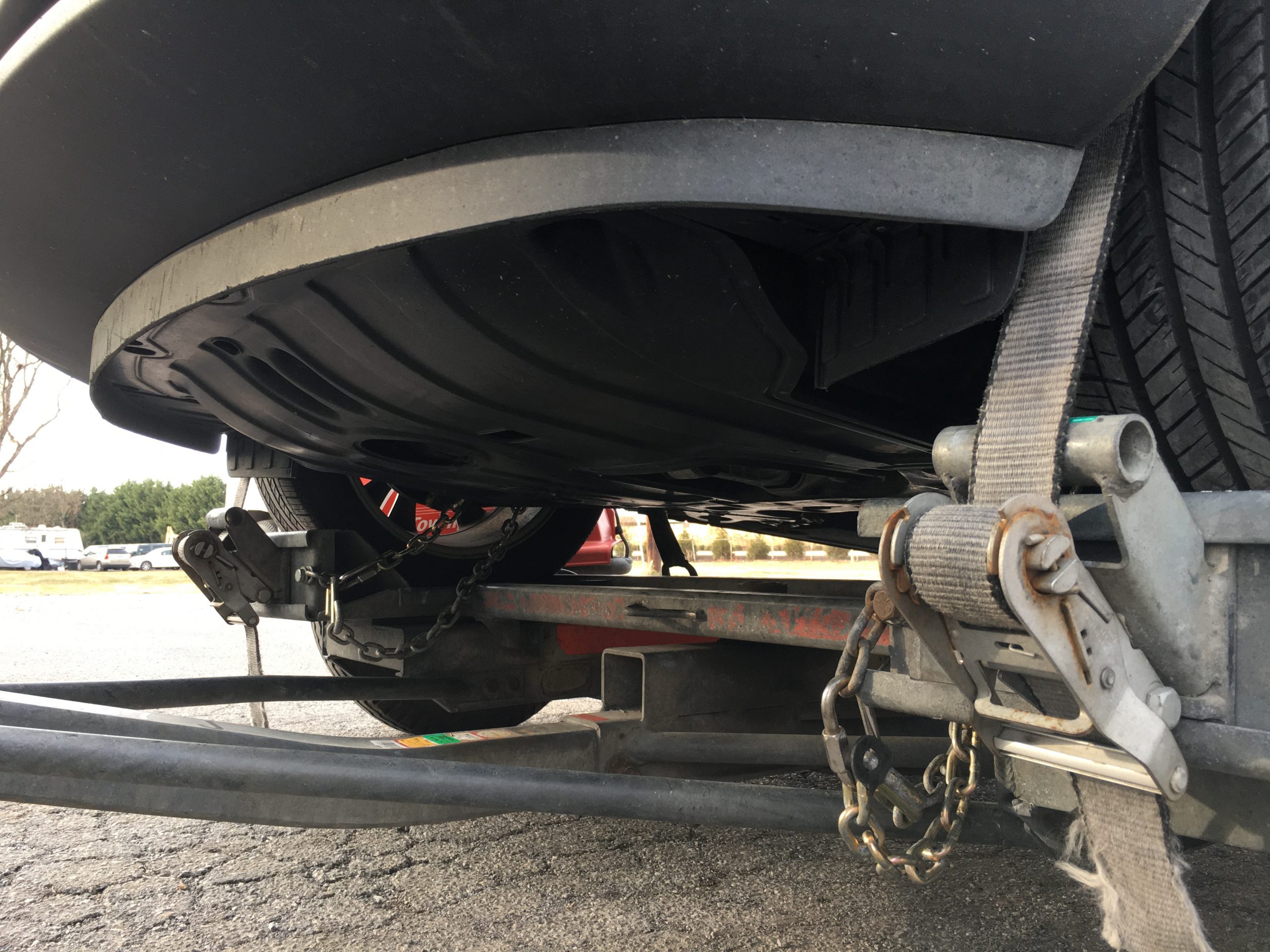
Using a tow dolly with your RV.
Tire Straps
What’s nice about the tow dolly is its ease of use. As long as the front wheels are adequately strapped down to the dolly, the weight of the car doesn’t strain the hitch as much. For that reason, I’d recommend the most affordable item on the list: universal tie down straps. A pro-tip for these is to drive a few miles to let the car settle before tightening down again.
Wire Kit
Another affordable, but crucial accessory for using a tow dolly—or any towing method—is a 6-Wire Kit. This connects the brake lights, parking lights, or emergency lights from your motorhome to the vehicle you are towing.
Debris Shield
When your car is at an incline to mount onto the tow dolly, debris and small rocks can get kicked up by your motorhome. That’s why you should consider getting a debris shield when towing your car with a tow dolly. If you are driving four down, flat towing, consider purchasing a similar cover for your tow bar to prevent car paint chipping or damage.
Whichever towing method you decide is best for your rig, stay on the lookout for accessories that provide real safety features that will alleviate any worry you might have on the road. The last thing you want is to be worried about the car instead of focusing on the adventure.

